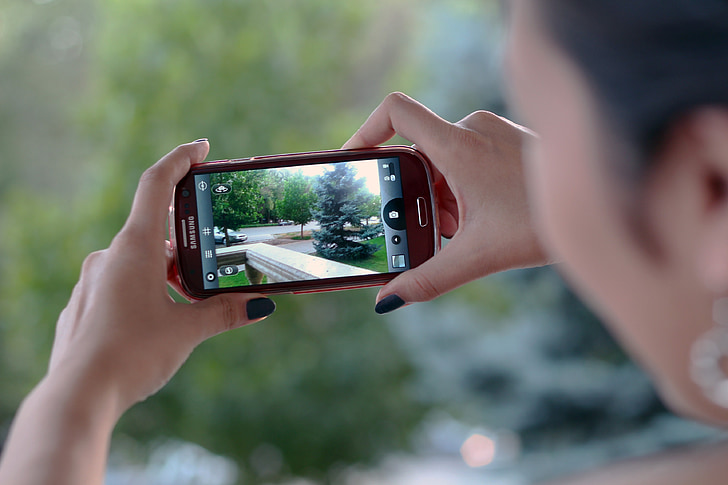Smartphone photography has revolutionized the way we capture and share moments. With advancements in camera technology, today’s smartphones can take high-quality photos that rival those taken with traditional cameras. This article will explore tips, techniques, and the benefits of using your smartphone for photography.

Why Choose Smartphone Photography?
1. Convenience
- Your smartphone is always with you, making it easy to capture spontaneous moments without carrying extra equipment. Whether you’re at a family gathering, traveling, or just out for a walk, your smartphone is ready to capture the perfect shot at any time.
2. Portability
- Smartphones are lightweight and compact compared to bulky camera gear. This portability allows you to take your smartphone anywhere without worrying about heavy bags or expensive equipment. It’s ideal for those who prefer a minimalist approach to photography.
3. Technology
- Modern smartphones come with advanced camera features, including multiple lenses, high resolution, and powerful editing tools. Features like optical zoom, night mode, and AI enhancements enable you to take professional-quality photos with ease.
4. Sharing
- Instantly share your photos on social media or with friends and family. Smartphones are designed for connectivity, allowing you to upload your images to platforms like Instagram, Facebook, and Twitter within seconds of taking them.

Tips for Taking Great Photos with Your Smartphone
1. Clean Your Lens
- A dirty lens can make your photos look blurry and dull. Clean it regularly with a soft, lint-free cloth to ensure clear and sharp images. Fingerprints, dust, and dirt can accumulate on the lens, impacting photo quality.
2. Use Gridlines
- Enable gridlines in your camera settings to help compose your shots using the rule of thirds. This helps balance your photo and makes it more visually appealing. By aligning your subject along the gridlines or at their intersections, you can create a more dynamic and interesting composition.
3. Focus and Exposure
- Tap the screen where you want the camera to focus. This ensures your subject is sharp and clear. Adjust the exposure by sliding your finger up or down to make the image brighter or darker, depending on the lighting conditions.
4. Natural Light
- Use natural light whenever possible, as it provides a more flattering and realistic look. Avoid using the flash, as it can create harsh shadows and unnatural colors. Early morning and late afternoon are ideal times for shooting, as the light is soft and golden.
5. Steady Your Shot
- Hold your phone steady or use a tripod to avoid blurry photos. You can also use the timer function to reduce camera shake when taking selfies or group shots. Keeping your phone steady is especially important in low light conditions where longer exposure times are required.
6. Experiment with Angles
- Try different angles and perspectives to add interest to your photos. Shoot from low, high, or side angles to create unique and compelling images. Changing your viewpoint can transform an ordinary scene into something extraordinary.
7. Edit Your Photos
- Use built-in editing tools or photo editing apps to enhance your photos. Adjust brightness, contrast, saturation, and sharpness to make your images pop. Cropping, straightening, and applying filters can also improve your photo’s overall look.

Advanced Techniques for Smartphone Photography
1. HDR Mode
- Use High Dynamic Range (HDR) mode to capture more detail in bright and dark areas of your photo. This is especially useful for landscape photography, where you have a wide range of light and shadow.
2. Portrait Mode
- Use portrait mode to blur the background and focus on your subject, creating a professional-looking photo with a shallow depth of field. This mode is perfect for taking portraits, close-ups, and even some still life photos.
3. Macro Photography
- Get close to your subject to capture detailed macro shots. Many smartphones have a dedicated macro mode or lens for this purpose. Macro photography is great for capturing small details like textures, insects, and flowers.
4. Night Mode
- Use night mode to take better photos in low light conditions. This mode helps reduce noise and improve detail in dark environments by using longer exposure times and advanced image processing techniques.
5. Panorama Mode
- Use panorama mode to capture wide-angle shots of landscapes or large groups of people. Simply move your phone slowly from one side to the other to create a seamless wide image. This mode is perfect for capturing expansive scenes that don’t fit into a single frame.
Benefits of Smartphone Photography

1. Accessibility
- Smartphone photography is accessible to everyone, regardless of skill level. You don’t need expensive equipment or extensive training to take great photos. With a smartphone, anyone can start capturing beautiful images.
2. Instant Gratification
- View and edit your photos immediately after taking them. No need to wait for film development or transferring files. This instant feedback allows you to make adjustments and improvements on the spot.
3. Cost-Effective
- Save money by using your smartphone instead of buying a dedicated camera and lenses. Modern smartphones are equipped with high-quality cameras that can meet most photography needs without additional investment.
4. Social Sharing
- Easily share your photos on social media platforms like Instagram, Facebook, and Twitter to reach a wide audience. Smartphones are designed for connectivity, making it easy to upload and share your images instantly.
Popular Smartphone Photography Apps
1. Snapseed
- A powerful photo editing app with a wide range of tools and filters to enhance your photos. Snapseed offers features like selective adjust, healing brush, and various artistic filters to make your images stand out.
2. VSCO
- Offers advanced editing tools and filters that give your photos a unique look. VSCO is known for its film-like presets and community of photographers who share and inspire each other.
3. Adobe Lightroom
- Provides professional grade editing tools and the ability to organize your photo library. Lightroom allows for detailed adjustments and the use of presets to quickly enhance your photos.
4. ProCamera
- Gives you manual control over your camera settings, including ISO, shutter speed, and white balance. ProCamera is perfect for those who want more control over their photography.
5. Camera+ 2
- Offers advanced shooting modes, manual controls, and powerful editing tools. Camera+ 2 is a versatile app that caters to both beginners and experienced photographers.
Conclusion
Smartphone photography has made it easier than ever to capture beautiful images. By following these tips and techniques, you can take stunning photos with your phone and share them with the world. Whether you’re a beginner or an experienced photographer, your smartphone is a powerful tool that can help you create amazing images.
